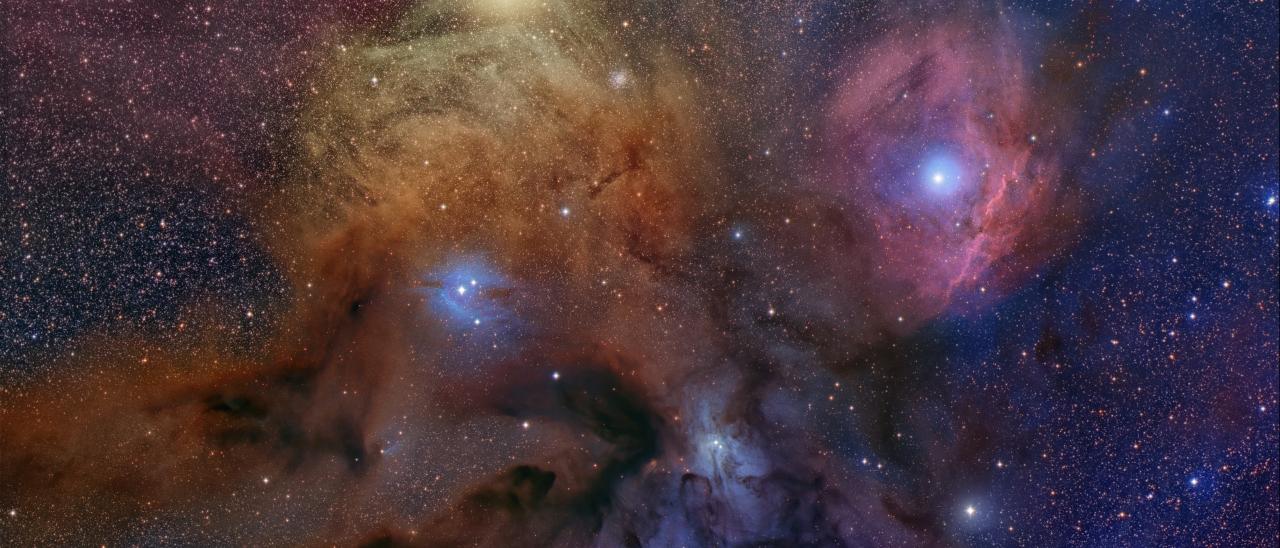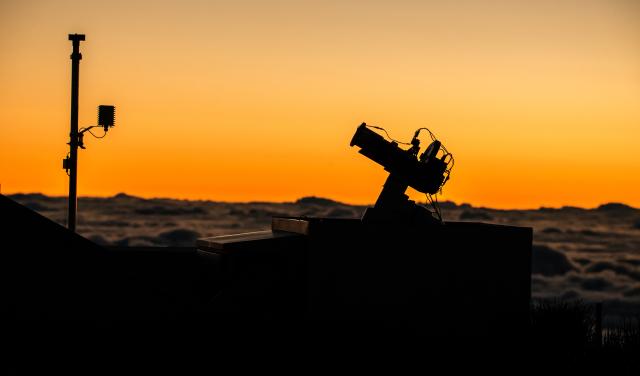When hundreds of thousands or millions of stars are formed from the same cloud of matter, they can remain gravitationally united for times greater than the Age of the Universe itself (13.8 billion years). This is the case of the Globular Clusters, swarms of tremendously old stars that formed during the early stages of the Universe, along with the galaxy itself. With an age of more than 12,000 million years, Globular Clusters are cosmic fossils that allow us to perform astroarchaeology, offering important clues about the initial processes of formation of galaxies.
The Milky Way has more than 150 globular clusters, some stolen from smaller galaxies that have been captured by the gravitational effect of ours. In this colorful image we can see up to three and two more in image #2. M4, composed of hundreds of thousands of stars at about 7,000 a.l., is the nearest globular cluster and so it is not surprising that it was the first object of this type in which an exoplanet was discovered, which curiously revolves around a double system, composed of a pulsar and a white dwarf. The other two globular clusters, M80 and NGC6144, are between 4 and 5 times further away, which is why they do not stand out so much in the image.
As always, in the image we see objects located at different distances: in the foreground, the brightest stars and nebulae are the objects closest to about 500 years a.l. The rest of the stars in our galaxy's disk create a dense starry mantle, while the globular clusters are somewhat more distant, although always within our galaxy, even not very far within it.
Few places in the sky, seen from Earth, have as much chromatic variety as the region of the heart of the Scorpion, whose brightest star is Antares. The location of this constellation near the nucleus of the Milky Way (in Sagittarius) is quite evident in the star map, as well as by the almost 100,000 stars that appear homogeneously distributed throughout the image. The different types of dust and gas clouds present give the great coloring. The red corresponds to the regions of hydrogen excited (HII regions) by young stars in formation. Blue and yellow correspond to stellar light reflected by gas and dust. And the dark regions are dusty and cold retro-lit molecular clouds, so dense that they do not let light through.
The image is the result of adding 22 exposures of 600s in each of the 3 wide filters R(red), G(green) and B(blue), plus 17 exposures of 1,200s in the narrow filter Hα with the Astrógrafo Sky Treasure Chest (STC) of the UC3. Author: D. López ©IAC
The image is the result of adding 22 exposures of 600s in each of the 3 wide filters R(red), G(green) and B(blue), plus 17 exposures of 1,200s in the narrow filter Hα with the Astrógrafo Sky Treasure Chest (STC) of the UC3. Author: D. López ©IAC.



